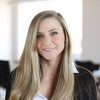As a restaurateur, you’re focused mostly on appealing to people’s sense of taste. Right?
Well, not really. When you run a restaurant, you have to focus on all five senses.
Why?
The reality is that all five of our senses are intrinsically linked. Each one influences and affects the other in a multitude of ways. Sight, smell, touch, taste, and hearing are interdependent elements in the total human experience – which means all of these tools come into play when creating the perfect atmosphere for your restaurant.
So, how often do you pay attention to the sounds at your restaurant?
Restaurant music plays a big role in the overall guest experience. There’s a lot of research supporting the theory that restaurant music directly impacts someone’s flavor perception.
One study in particular reported that, “listening to a lower-pitched soundscape can help to emphasize the bitter notes in a bittersweet toffee, while listening to a soundscape with a higher pitch tends to bring out its sweetness.”
Restaurant background music can also impact the speed at which customers consume food and drink, as well as the quality and quantity they buy and devour.
Below you’ll find guidelines for making successful restaurant music choices at your restaurant, including:
- The top five ways you can use restaurant music as a tool to boost sales
- The benefits of streaming
- Quick tips for navigating copyright laws and licensing fees
- Determining when live music is the right choice
- Where to turn for help if music isn’t your strong suit
- How to select the right sound system for your business

5 Ways To Use Restaurant Music to Impact Sales
Music and food have been paired across cultures and throughout history.
However, unlike your restaurant’s décor, music choices shouldn’t stay the same. You’ll want to adapt volume, tempo, and genre to a variety of factors throughout your restaurant’s service.
Sound complicated?
Don’t worry – we’re here to help.
1. Adjust Speed and Tempo
This is as straightforward as it gets. Studies show that faster paced music will make people eat faster.
Making people feel rushed is never the goal, but if your restaurant is small and requires high turnover to keep profits high, faster-paced music can help.
On the flipside, slowing it down can influence your guests to linger long enough for another cocktail, a cup of coffee, or dessert.
While there is no steadfast rule for speed, it’s important to be aware of the effects it has on guest behavior. The tempo you choose for your dinner music should be determined by the effect you want to have on guests. This will depend on what type of restaurant you are – 5-star, casual diner, or something in between.
2. Play with Volume
Let’s start with the obvious. If your music is too loud it will drive people away. Period.
But what people don’t realize is that quiet music can also drive people away because it creates the impression that your restaurant is preparing to close up.
Between these two extremes, the effects of volume are not as straightforward as they are with pace and genre. Age and gender impact people’s preferences when it comes to volume. For example, one study showed that younger people are more prone to linger when music is louder while older people will stick around in places where the music is just in the background.
As with everything else, you’ll need to read the room and use your judgment. Adjust the volume throughout service depending on time of day and the number of diners.
3. Keep Your Music Choices on Brand
Music genre can have a huge impact on how diners perceive your brand and affect how much they’re willing to spend on food and drink.
For example, this study showed consumers are more likely to purchase higher-end wines when a restaurant is playing classical music rather than pop or top 40. The same study showed that people are more likely to purchase French wine when French music is played, and German wine when German music is played.
The most important thing is choosing music that fits with the overall vibe of your restaurant. BUT, you don’t have to pigeonhole yourself. Have a common thread that links your music choices, but enough variety to prevent the vibe from getting stale.
For example, if you’re operating a Tiki bar, design a playlist that includes a little surf rock, a little Hawaiian folk, and a little 50s rockabilly to keep it on brand without compromising variety.
4. Adapt Your Music Choices to the Time of Day
Time of day will influence volume, tempo, and genre of music. A lunch crowd in the business district might call for faster-paced music at a medium volume for privacy without impeding conversation. When switching to dinner service, that same restaurant might want a slightly louder and slower paced playlist – think old school soul – to keep the energy high for larger groups and to encourage more drink orders.
5. Choosing Music for the Size of the Crowd
The human body is an amazing thing. Did you know we naturally absorb approximately 0.3db of sound just by being in the room?
What that means is that you can go ahead and nudge that volume button up a notch when your restaurant is at capacity, then bring it down when the venue isn’t as packed.

Building a Playlist That’ll Last
Have three solid, on-brand, playlists ready at all times, so you can flip between them, depending on the energy of the crowd. Feel free to go back and switch playlists as the day goes on and the crowd shifts.
We don’t need to tell you how busy things can get mid-service, so make sure your pre-made playlist will get you through not one but several meal services. Not only do you want your guests to stay interested, but your staff will also get bored (read: less motivated to upsell and provide a great customer experience) if they’re hearing the same fifteen songs on loop.
A good rule of thumb is to start with 300 to 600 songs and continually refresh the list by replacing a few songs at a time. Shuffle it to avoid any repetition.
Consider the five factors listed above as you decide on songs to populate your playlists.
The Benefits of Streaming
Long gone are the days of mixed tapes and burned CDs. Even longer gone are the days of listening to entire albums by a single artist – unless it’s for a theme night or listening party.
Variety is king now, which can mean a lot of extra work for you as you gear up to soundtrack your dinner service.
But have no fear – streaming is here!
Streaming services like Pandora, Spotify, Apple Music, and Google Play (to name only the top few) allow you to create multiple lengthy and varied playlists. To help make it even easier, they also provide suggested songs and artists that will fit with what you’ve already chosen.
Most streaming services charge a small monthly subscription fee (somewhere between $10 and $25). Some like Spotify offer a free option if you don’t mind the occasional advertisement between songs (this tends to interrupt flow, so we don’t recommend it).
Most streaming services let you access other people’s pre-made playlists, so you can search for by mood and genre. This can be a great tool as you dive into the world of playlist curation.
What about a playlist from your favorite chef? Some chefs have even taken to designing playlists to match their food and sharing them through these streaming services.
Staying Above Board: Navigating Copyright Laws
Unfortunately, subscribing to paid streaming services isn’t enough to legally play copyrighted music in your restaurant.
To be fully and officially compliant with copyright law in a way that lets you use any song you’d like, you need licences from the following three Performance Rights Organizations (PROs):
- Broadcast Music Inc. (BMI)
- American Society of Composers, Authors, and Publishers (ASCAP)
- Society of European Stage Authors and Composers (SESAC) – recently expanded to include the US
The cost of acquiring a music license depends on a number of factors, including the size and capacity of your restaurant.
You can also get business accounts on certain streaming services like Pandora that include PRO fees.

What You Need to Know About Live Restaurant Music
Many restaurants have transitioned to playing recorded rather than live music, but higher-end restaurants can benefit from having live bands from time to time.
Live music emphasizes your attention to detail and can lead to people to linger at the table. This can mean less turnover but higher check sizes because people will stay for cocktails or wine.
There are added costs to bringing in live music, since musicians (obviously) need to be paid, and you’ll need proper stage and sound equipment. It also means a few additional man-hours as you source a roster of local musicians who fit your brand.
Depending on the type of music you plan to play, you may also want to consider investing in a small backline of instruments, like a basic drum kit and a few amplifiers to accommodate multiple musicians and decrease load-in and load-out time.
Local music listings, Facebook events in your area, and word of mouth are great ways to start the search. You can also post an ad or turn to social media to let people know you’re looking for musicians.

Major Keys and How They Set the Mood
No, we aren’t suggesting you hire DJ Khaled to spin your restaurant (but you do you, baby!).
There’s a little thing called “key” in music. It’s divided into major and minor and they sound entirely different – though you wouldn’t necessarily pick up on it if you didn’t know what to look for.
Usually, major key songs sound really happy while minor key are moodier and more introspective. You may be prone to thinking that happy is always better, but take a moment to meditate on what mood you’re trying to set in your restaurant. Revisit your brand strategy to see the original vision you had for the feel of your restaurant, then let that influence the music you choose.
What If I’m Tone Deaf?
Ask for help! Local artists, DJs, and even your very own staff can be great resources.
You can hire people to come in and DJ or enlist them to curate a playlist you can play on your own. Or you can get to know the people who work for you and what they’re interested in – then play into that!
In a pinch, there are music solution services that can curate playlists according to your brand – for a fee, of course. But the fee often includes licensing fees, which can consolidate costs for you.
We’ve listed a few of the best ones below:
A Recipe for Sound System Success
Now that you know all the ins and outs of designing an influential and adaptable music atmosphere in your restaurant, you’ll want to take a moment to select a high-quality sound system to play it on.
Researching professional-grade sound systems can be daunting. A lot of content on the subject is loaded up with audiophile lingo that reads like a foreign language to most of us.
It doesn’t have to be so intimidating. We’ve broken it down into four digestible pieces for you.
1. Start at the Source
Where is your music coming from? Do you have a live band or a DJ with a turntable? Or are you playing music off your laptop or phone?
Even the highest-quality speaker system won’t sound right if your music is playing off a lo-fi device. If you’re playing music off your phone or laptop, check your streaming service’s settings to optimize the sound. You can also upgrade your laptop’s sound card easily and at low cost.
2. Mix It Up
Your mixer or PA system controls the frequency levels of your audio. What that means is that it allows you to control bass, treble, and other settings to the right levels for the room.
You can forego this piece if your computer or phone has built-in equalizer settings, but it will be crucial if you are hosting live bands or DJs. For live music, you’ll want to invest in a mixer with more than three channels, since each instrument and microphone will require its own channel.
3. Now, Amp It Up
This is the part of your sound system that allows you to get loud.
Wattage is what you’re looking for when you shop for an amp. The rule of thumb is five watts per person listening. So, depending on the seating capacity at your restaurant, you can determine how many watts you’re looking for.
4. Speak(er) Up
Now that you’ve built up a quality sound system, you can direct your attention to the speakers.
Here’s your guiding rule: Heavier speakers will offer a sturdier sound and produce less interference, while smaller speakers are more prone to shaking which can reduce the quality of the music being played.
Speaker choices for smaller restaurants
If your restaurant is small and your diners prefers music as restaurant background noise, then you can likely select a Bluetooth system designed for homes.
Congratulations! You’ve made it to the end. Now you’re ready to go forth and rock your restaurant music choices from start to finish.
Free Restaurant Cleaning Checklist
Sign up for our free weekly TouchBistro Newsletter







